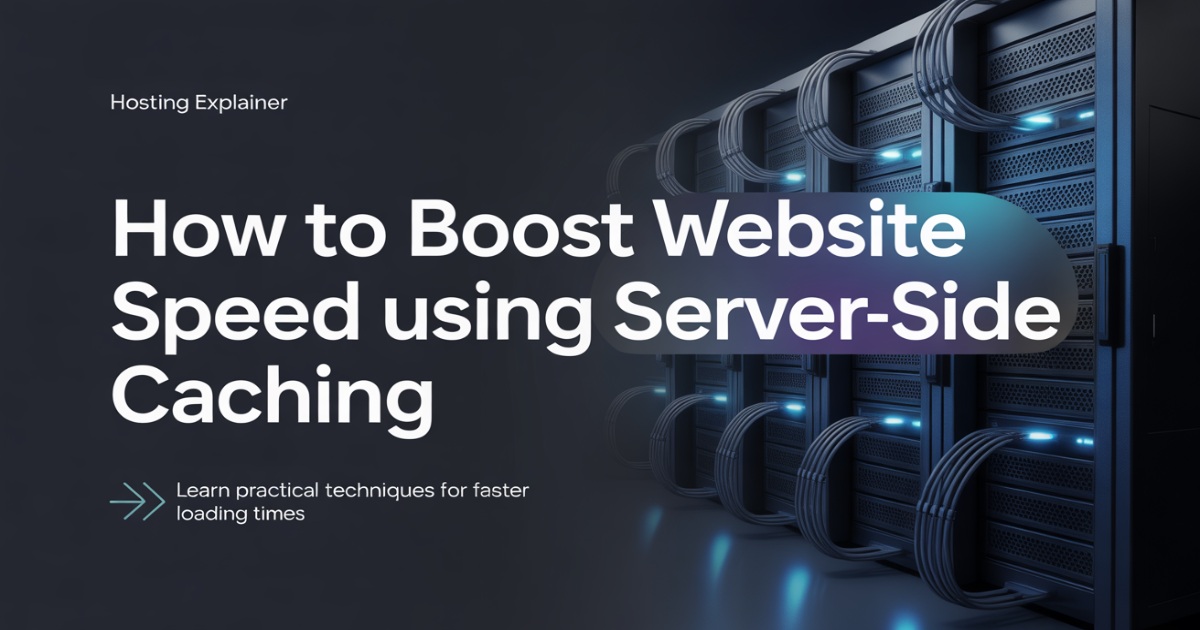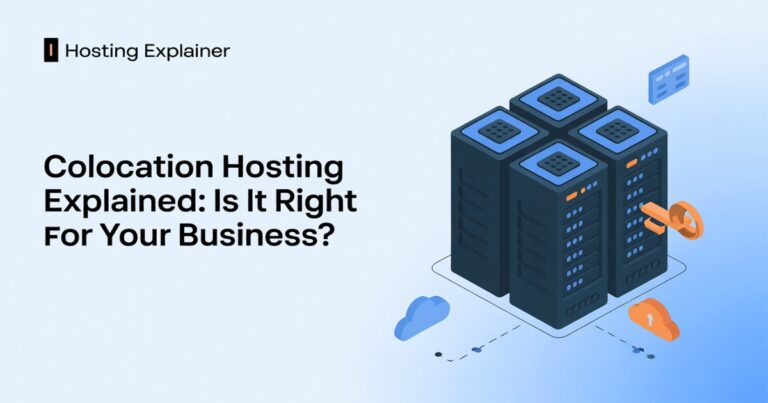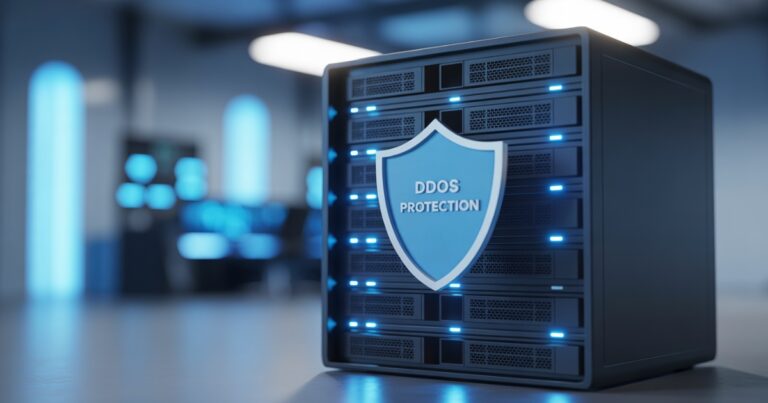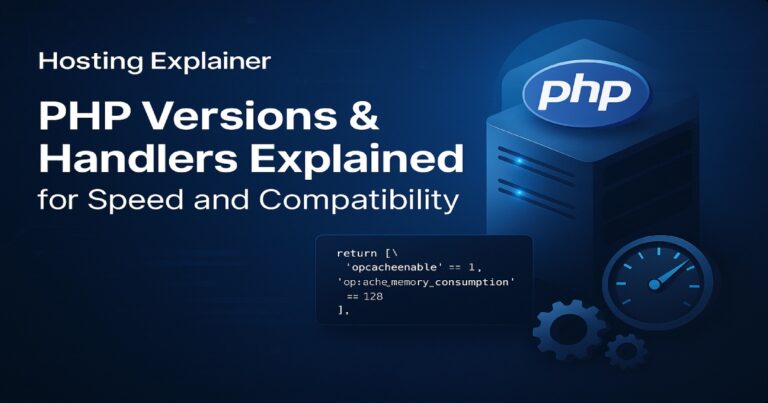How to Boost Website Speed Using Server-Side Caching in 2025
Website speed is no longer a luxury; it’s a necessity. Slow-loading pages frustrate visitors, hurt your SEO, and cut into conversions. Google’s research shows that when load time increases from one second to three seconds, the chance of a user bouncing jumps by 32%. That’s huge.
I’ve seen this firsthand. A client’s eCommerce store was painfully slow, loading in about 6 seconds. After enabling server-side caching, the same pages loaded in under 2 seconds.
Their bounce rate dropped, and sales went up within weeks. That’s the power of caching. It doesn’t just make your website faster; it makes it more efficient and reliable.
In this guide, I’ll break down what server-side caching is, why it matters, how to set it up, and how to avoid common mistakes, all in a way that’s clear, practical, and easy to follow.
What is Server-Side Caching, and How Does it Work?
At its core, server-side caching is a way to store data so your server doesn’t need to regenerate it every time someone visits. Instead of building a page from scratch with database queries and scripts, the server serves a pre-stored version.
A simple way to think of it: imagine making soup. Without caching, you’d cook from raw ingredients every time someone asked for a bowl. With caching, you make a big pot once, then quickly ladle portions when people want it. Much faster, much less work.
Server-Side vs. Client-Side Caching
- Server-side caching happens on your server. It’s powerful and reduces load dramatically.
- Client-side caching happens in the user’s browser. It helps too, but only after the first visit.
Both are useful, but server-side caching has the biggest impact on Time to First Byte (TTFB) and server efficiency.

Why Server-Side Caching Is Essential for Website Speed
Earlier, we touched on why speed matters. Let’s get specific:
- Reduces server load: Instead of running dozens of queries for each page, your server sends the cached version instantly.
- Improves TTFB: Users see your content start loading almost instantly.
- Enhances SEO rankings: Google considers speed as part of Core Web Vitals, which directly impacts rankings.
- Boosts user experience: Faster sites keep users engaged, which means more conversions.
For high-traffic sites, caching isn’t optional. It’s critical. Without it, your server can get overwhelmed and even crash.
Different Types of Server-Side Caching
Caching isn’t one-size-fits-all. Different methods work best for different needs.
Full-Page Caching
This stores an entire HTML page. When a visitor requests it, the server delivers the stored version. Great for blogs or static pages.
Object Caching
Instead of caching entire pages, this caches pieces of data, like results of database queries. Tools like Redis and Memcached are commonly used here. Perfect for dynamic websites like eCommerce stores.
Opcode Caching
Every time PHP code runs, it needs to be compiled. With OPcache, compiled code is stored in memory, so your server doesn’t waste time compiling it again and again.
Reverse Proxy Caching
Systems like Nginx or Varnish act as middlemen. They sit between your visitors and your server, delivering cached responses super fast. This is ideal for large, high-traffic sites.
Each of these methods can work alone, but the best results usually come from combining them.
How to Implement Server-Side Caching on Your Website
Now let’s move from theory to practice. Here’s how you can set up caching depending on your platform.
1. For WordPress & Other CMS Platforms
If you’re running WordPress, plugins make caching simple:
- LiteSpeed Cache: excellent if your host uses LiteSpeed servers.
- WP Rocket: beginner-friendly with lots of optimization features.
- W3 Total Cache: highly configurable, great for advanced users.
These plugins handle page caching, database caching, and even object caching with a few clicks.
2. For Apache & Nginx Servers
If you manage your own server:
- On Apache, enable mod_cache or mod_cache_disk.
- On Nginx, set up fastcgi_cache or proxy_cache.
Both reduce backend processing and lower TTFB.
3. For Database-Heavy Applications
Apps with lots of dynamic queries benefit hugely from object caching:
- Redis—fast, reliable, widely used.
- Memcached—simple and efficient.
These store query results in memory, so they don’t need to be recalculated each time.
4. For Enterprise-Level Sites
If you run a large-scale platform or eCommerce store with global traffic:
- Use Varnish Cache in front of your web server.
- Pair it with a CDN for global coverage.
This combo handles millions of requests smoothly.
Server-Side Caching vs. CDN Caching What’s the Difference?
It’s easy to confuse the two, but they work in different ways:
- Server-side caching: Happens on your web server, before sending content out.
- CDN caching: Stores cached versions of your site on servers worldwide and delivers them from the closest location to the user.
Together, they provide a huge speed boost. For example, server-side caching speeds up your origin server, while a CDN reduces latency for users far from your server location.
Best Practices for Server-Side Caching
Setting caching is one thing. Optimizing it is another. Here are some tips:
- Monitor cache hit ratio: This shows how often cached content is served. Higher is better.
- Set sensible expiration times: Static content can be cached longer; dynamic content should refresh more often.
- Test after every change: Use tools like GTmetrix, WebPageTest, or Google PageSpeed Insights.
- Avoid over-caching: Don’t cache personal dashboards, shopping carts, or sensitive content.
- Combine caching layers: Use full-page caching, object caching, and a CDN together.
Done right, caching can cut load times by more than 50%.
Common Mistakes to Avoid in Server-Side Caching
Caching mistakes can hurt more than help. Watch out for these:
- Misconfigured headers: can cause browsers or CDNs to serve outdated content.
- Not clearing cache after updates: visitors may see broken layouts or old versions.
- Ignoring Core Web Vitals: caching helps, but oversized images and poor scripts still slow you down.
- Over-relying on caching: it’s not a magic bullet. Fix slow queries and code too.
- Skipping mobile testing: a site may look fine on desktop but fail on mobile caching setups.
How Server-Side Caching Improved My Website
Let’s revisit that eCommerce client I mentioned. Their homepage loaded in nearly 5 seconds. After enabling LiteSpeed Cache and configuring Redis object caching, here’s what happened:
| Metric | Before Caching | After Caching |
| Load Time | 4.8s | 1.9s |
| Time to First Byte | 900ms | 200ms |
| Bounce Rate | 68% | 42% |
| Conversion Rate | 1.2% | 2.1% |
The improvements weren’t just technical. Their business grew because users stayed, engaged, and bought more. That’s the real value of caching.
FAQs About Server-Side Caching
1. Does server-side caching improve SEO?
Yes. Faster sites perform better in Google rankings and user engagement.
2. What’s the difference between server-side caching and browser caching?
Server-side caching happens on your server. Browser caching happens on the user’s device.
3. Which is better for WordPress: server-side caching or plugin caching?
Both help. Plugins simplify setup, but server-side caching is more powerful for large or complex sites.
4. How do I know if caching is working?
Run tests with GTmetrix or PageSpeed Insights. Look for reduced TTFB and faster overall load times.
5. Can caching cause website errors?
Yes, if misconfigured. Always test pages with logins, forms, and carts after enabling caching.
Why Server-Side Caching Is the Key to Faster, Smarter Websites
Server-side caching is one of the most effective ways to speed up your website. It reduces server strain, improves SEO, and delivers a smoother experience for users.
The best part? You don’t need to be a tech wizard to get started. Begin with a caching plugin or simple server configuration, test your results, and then explore advanced setups like Redis or Varnish as your site grows.
A faster website isn’t just good for rankings. It’s good for people, and when you make your site better for users, everything else. Traffic, trust, and conversions follow.
So, if you haven’t already, make today the day you enable caching. Your users (and your bottom line) will thank you.






